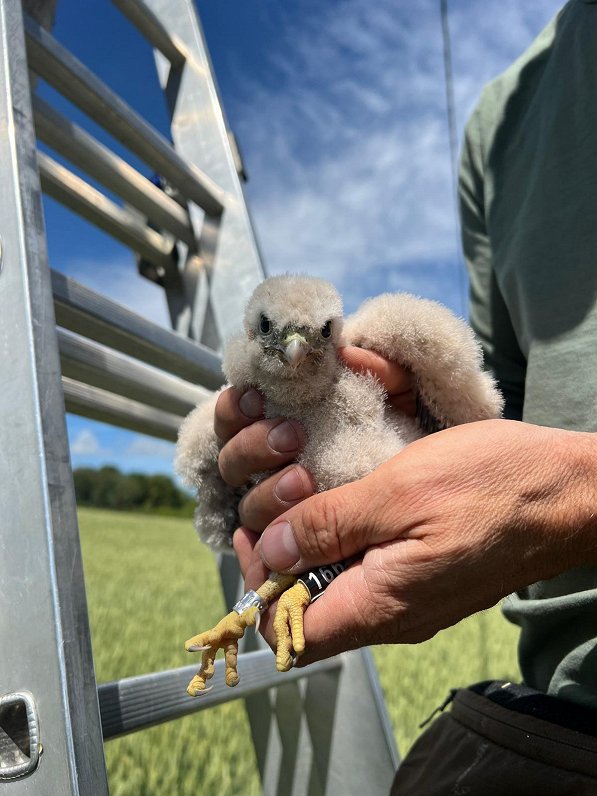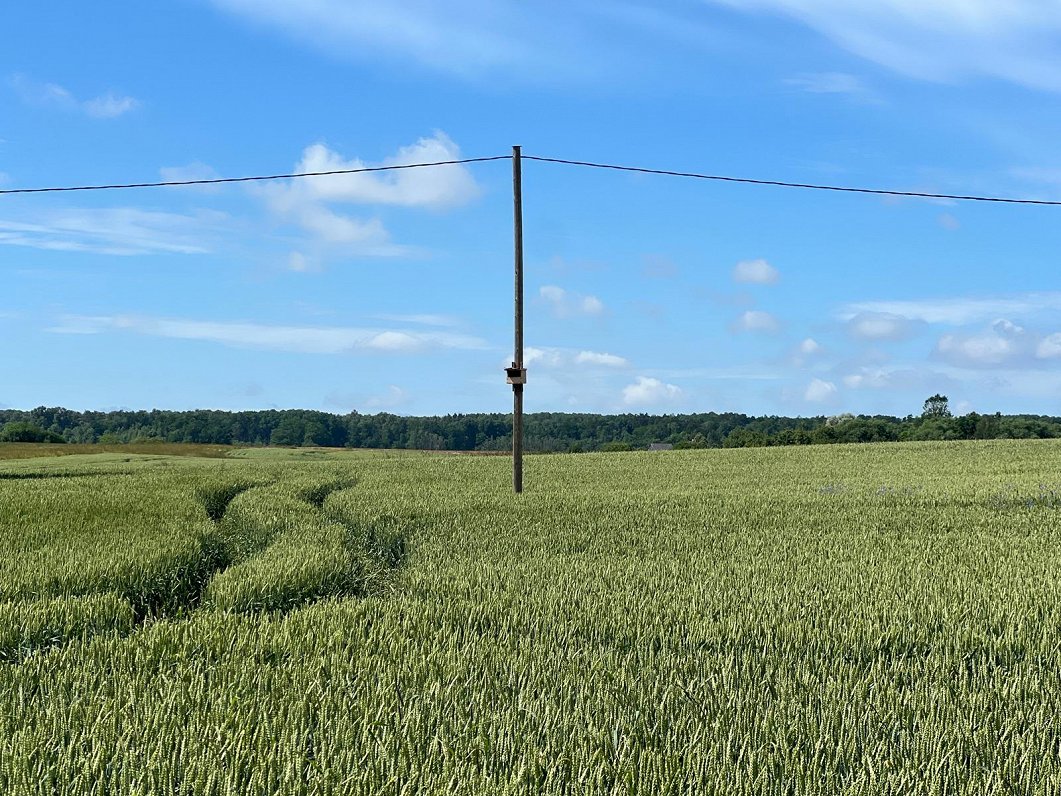The first houses were installed this spring, while ornithologists carried out the first ringing of the inhabitants and their chicks during the summer.

Historically, the common kestrel (also known as the "mouse hawk") was widespread in Latvia, but in 1960 its population declined rapidly, reaching an all-time low at the end of the 20th century. Today, the kestrel is listed in the Latvian Red Book as a specially protected bird species.
Up to 300 birdhouses (50 per year on average) are to be installed on low-voltage poles, where researchers will also deploy trail cameras for birdwatching.
The cages will be located in seven plots in Grobiņa, Ventspils, Talsi, Saldus, Skrīveri, Tukums, and Eleja. Six of the cages installed in the vicinity of Grobiņa have already been occupied, ornithologists said.
Although a bird of prey, the common kestrel is a peaceful bird that settles in open areas with trees and shrubs, away from people. It feeds on a variety of small rodents, reptiles, and small bird species. The breeding season for these birds begins in April, with usually three to six eggs laid.
The young hatch in late May or early June, but usually two to three grow to flight age. The young birds usually leave their breeding grounds in July to spend the winter in southern Europe in the second half of August.



























